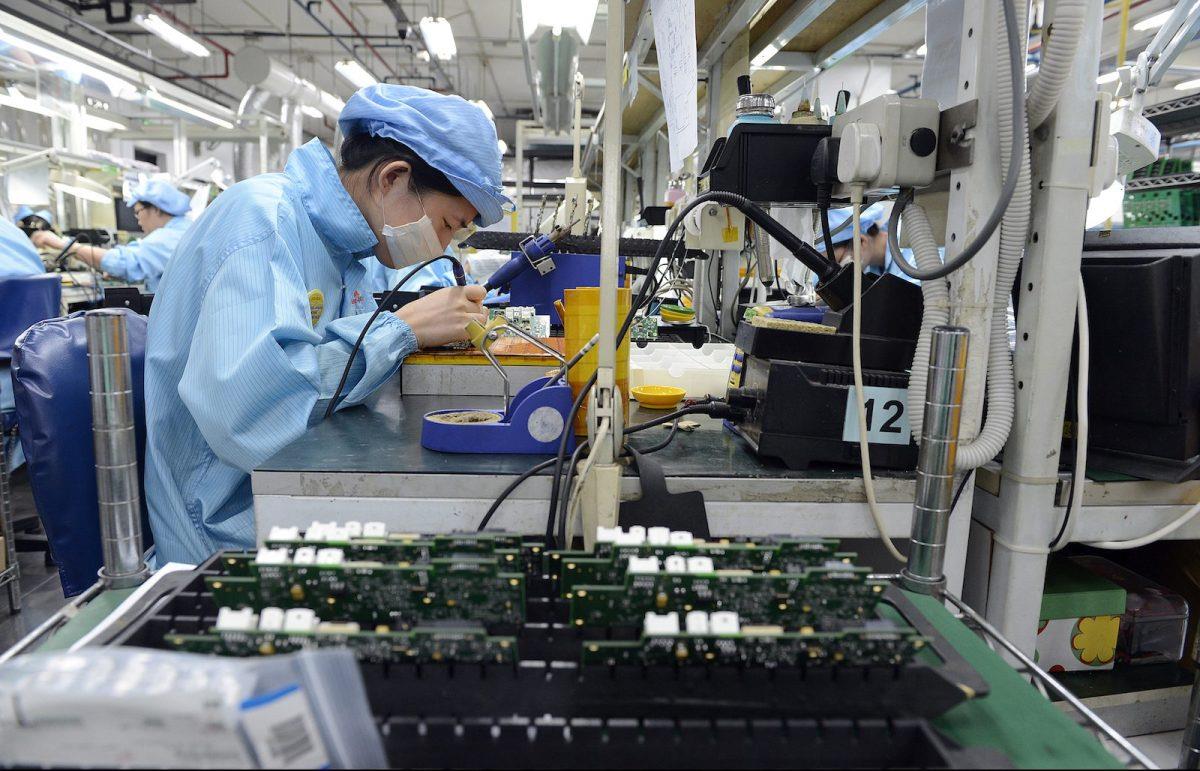Data released by the Singapore Economic Development Board (EDB) on July 26 showed electronics output contracting by 2.9% in June versus minus-23.7% in May. Though the numbers showed year-on-year declines for all clusters except transport engineering, electronic modules and components and semiconductors grew 7.5% and 3.1% year on year respectively.
The publication of Singapore's factory results was coincident with an announcement by South Korea's SK Hynix, the world's second-biggest memory-chip maker, which said it saw early signs of the chip sector beginning to recover from a deep downturn amid robust demand for artificial-intelligence (AI) capacity, with rising interest in OpenAI's ChatGPT seen as the main driver of demand.
“The worst of the global electronics downturn may be behind us,” said senior economists Chua Hak Bin and Brian Lee Shun Rong of Maybank Investment Banking Group.“A modest export boost from China's reopening and possible stabilization in global electronics demand” could bring about a fourth-quarter manufacturing recovery in Singapore, they said in a research note sent to Asia Times.
Latest stories us unveils island launchers for china containment

marcos's military pension, us cooperation dilemma

the command center attacks in russia and ukraine
Though Singapore's non-oil domestic exports, seen as a barometer for external demand, declined at a steeper pace in June, by 15.5% versus minus-14.8% in May, exports to China including Hong Kong bucked the downward trend, with each registering an increase of 3.7% (3.1% in May) and 41.9% (minus-41.2% in May) respectively. The city-state's exports to all other major markets declined in June.
“China's reopening is finally giving exports some lift as seen in the improvement in shipments to China and Hong Kong. Nonetheless, the modest boost was insufficient to offset tepid demand from other regions,” Chua and Lee said.“Exports remain in the doldrums with few signs of a meaningful turnaround, which will continue to stymie manufacturing activity in the coming months.”
Singapore's electronics cluster saw its output fall by a milder-than-expected 2.9% in June, its smallest decline since December 2022, while semiconductor output expanded for the first time since October 2022. But electronics exports declined for the 11th straight month at minus-15.9% versus minus-27.2% in May, with tepid demand for consumer electronics, computer peripherals and data storage.
A manufacturing recovery by the fourth quarter this year would“reduce the risk of a recession or double-dip downturn,” said Maybank's
Chua and Lee, who had earlier forecast that Singapore would fall into a second-quarter technical recession, which preliminary data showed was“averted despite the steep manufacturing fall since the start of the year.”
Economists had regarded a second-quarter technical recession, defined as two consecutive quarters of contraction, as being highly likely. A Bloomberg poll of economists predicted the economy would shrink 0.2% quarter on quarter. But gross domestic product (GDP) grew 0.7% year on year in the April-June period, up 0.3 percentage point from the first quarter thanks to resilient service-sector performance.
Though the city-state sidestepped a recession, economists remain gloomy on Singapore's full-year outlook, with the aggressive tightening of monetary policies, particularly in Western economies, seen as a major export dampener. Singapore's Ministry of Trade and Industry (MTI) has maintained its 2023 growth forecast at 0.5% to 2.5%, though analysts see a downgrade as highly likely.
Despite growth in the doldrums, progress continues to be made on inflation. Core inflation, which excludes private transport and accommodation costs, cooled for a second straight month, dropping to 4.2% year on year in June, from 4.7% in May. Easing prices have prompted authorities to lower the trade-dependent nation's overall inflation forecast for 2023 earlier this month.
The ministry and the Monetary Authority of Singapore (MAS), the city-state's central bank, revised their headline or overall inflation predictions to between 4.5% and 5.5% for the year, from 5.5% to 6.5% previously. Core inflation estimates remain the same, at between 3.5% and 4.5%, though private economists believe that figure could drop below 3% for the full year if trends continue.
The central bank uses exchange rates, managed against a trade-weighted undisclosed basket of currencies from Singapore's major trading partners, instead of interest rates as its primary policy tool to manage inflation. It has enacted five rounds of monetary tightening since October 2021
but opted against a sixth round of tightening during a policy review in April, defying most expert forecasts.
Observers interpreted June's lower inflation numbers as a vindication of the Monetary Authority's decision to pause its streak of aggressive monetary policy.
The central bank said this month it would not switch from“inflation-fighting mode” to“growth-supporting mode” as inflationary risks linger, though
economists expect it to keep monetary policy settings unchanged at its biannual policy review in October.
“We expect MAS to maintain the current appreciation stance at the October meeting to contain still-elevated core inflation, even as price and wage pressures taper in the second half of the year,” Maybank's Chau and Lee said.“The growth downturn is turning out to be shallower than expected, with a technical recession averted, and the prospect for a growth recovery in 2024 is improving.”
Tan Jing Yi, a senior country risk analyst at BMI Industry Research, told Asia Times he expects price increases“to continue tapering off on the back of declining imported goods prices as inflation in the city-state's major trading partners ease. A moderation in global supply-chain frictions, energy and food commodity prices also serve as tailwinds to the overall disinflation story.”
Like this:Like Loading... Related






















Comments
No comment